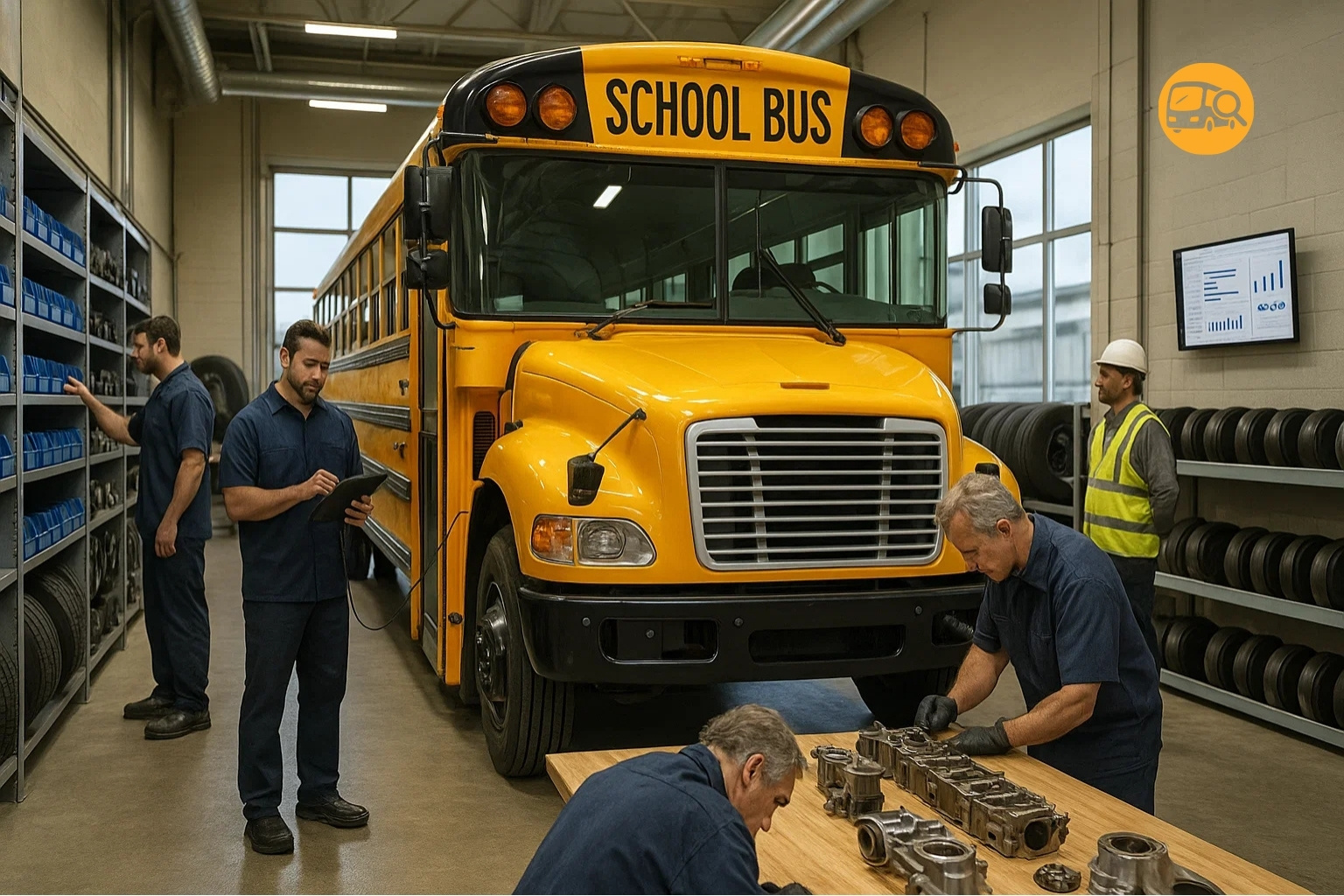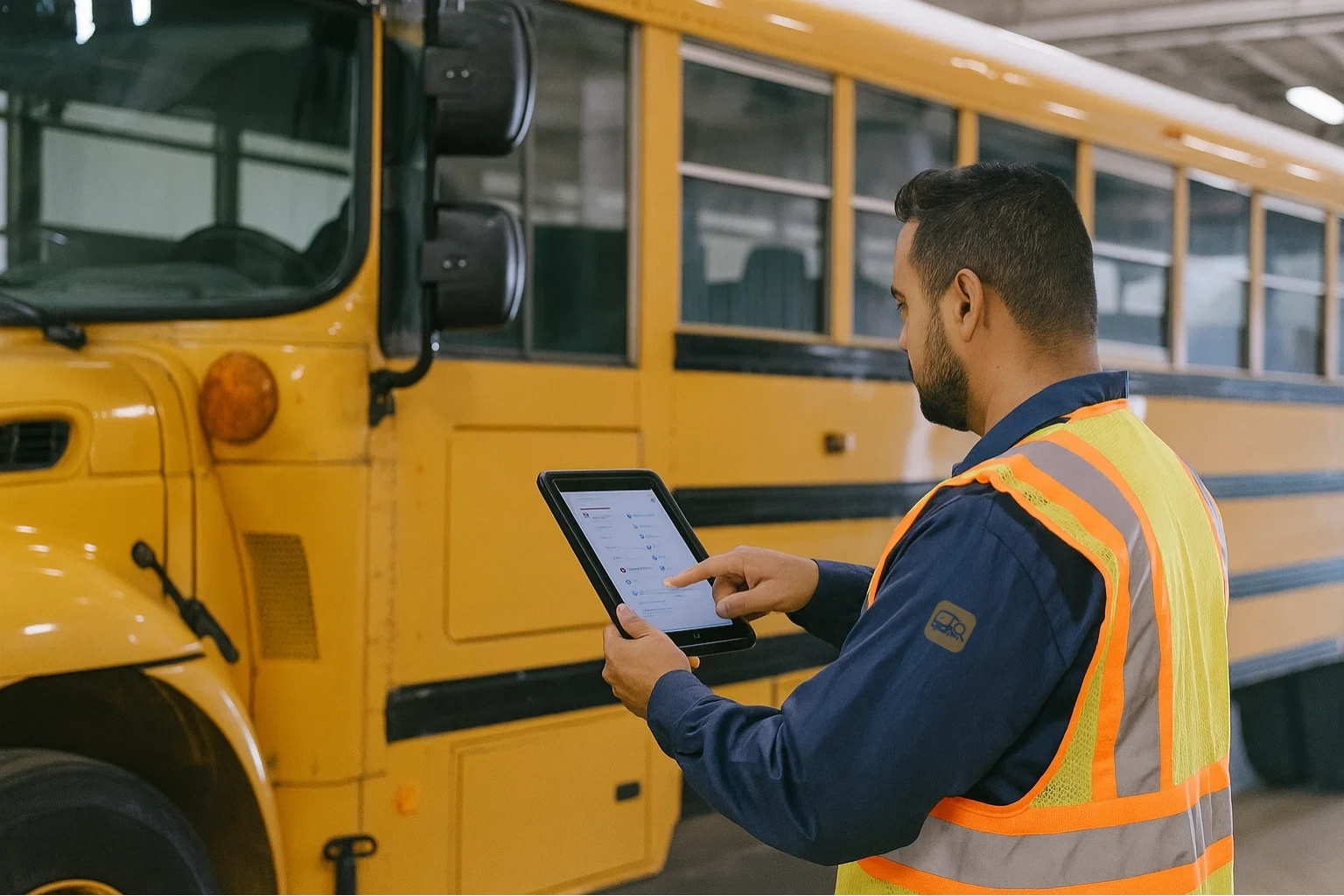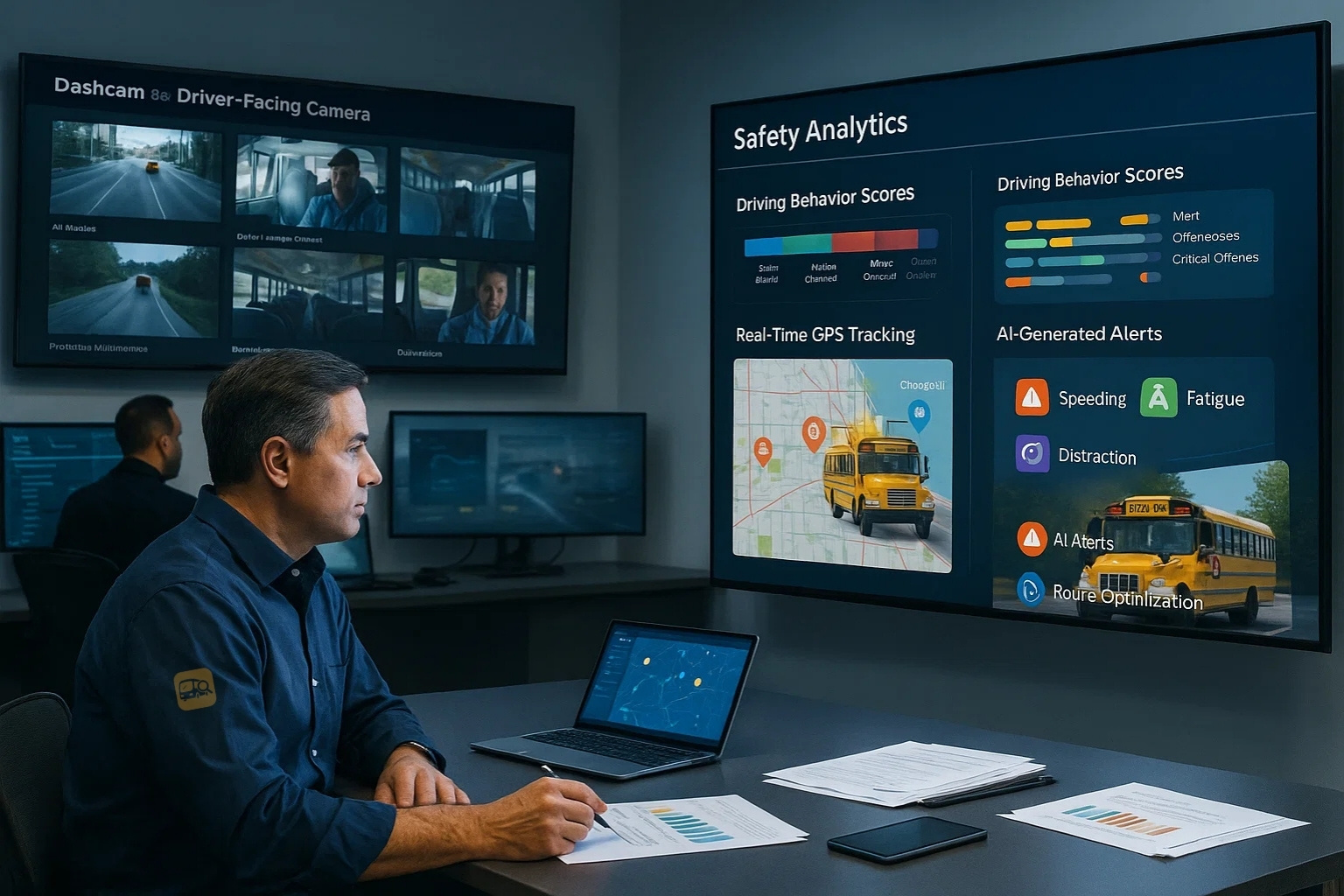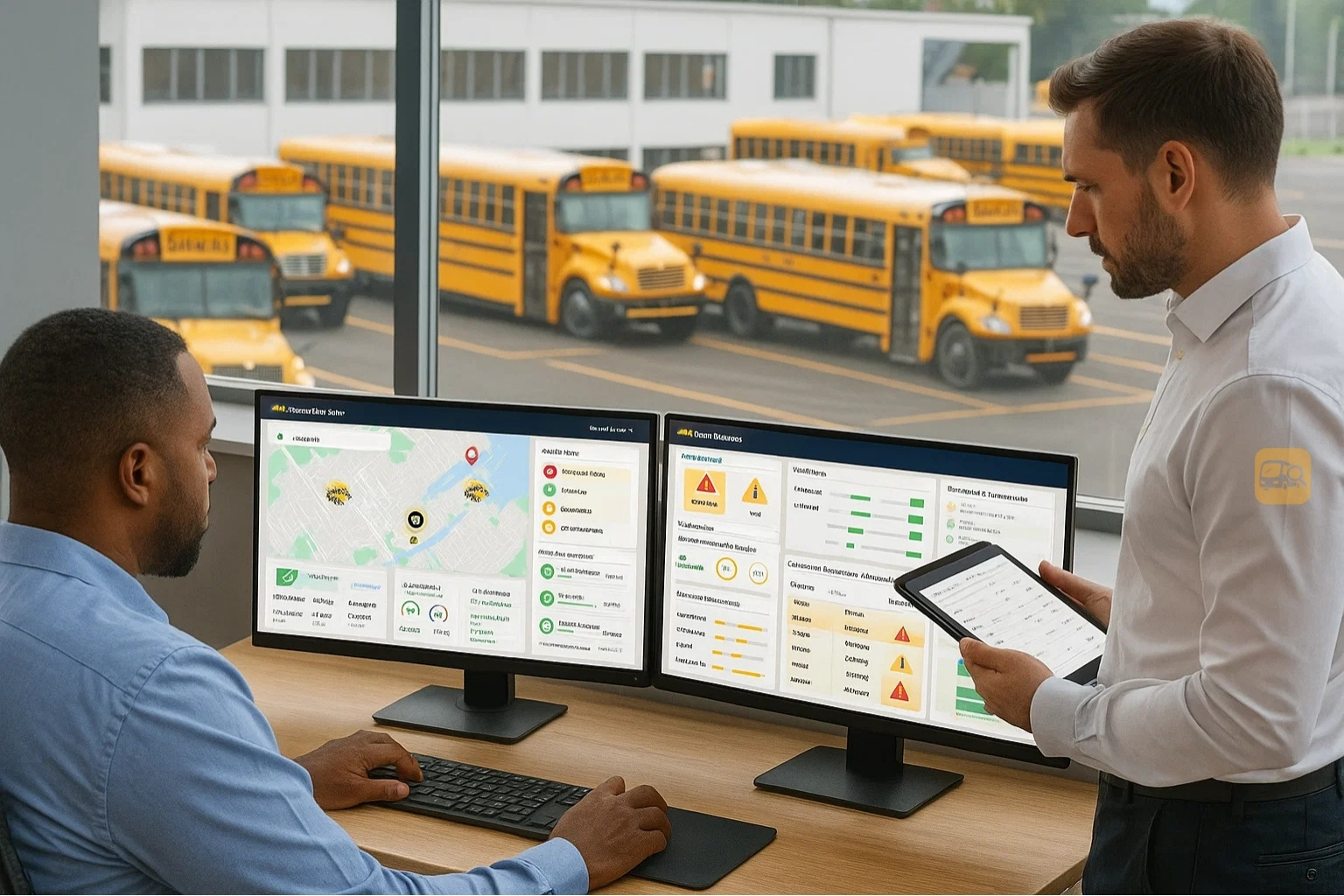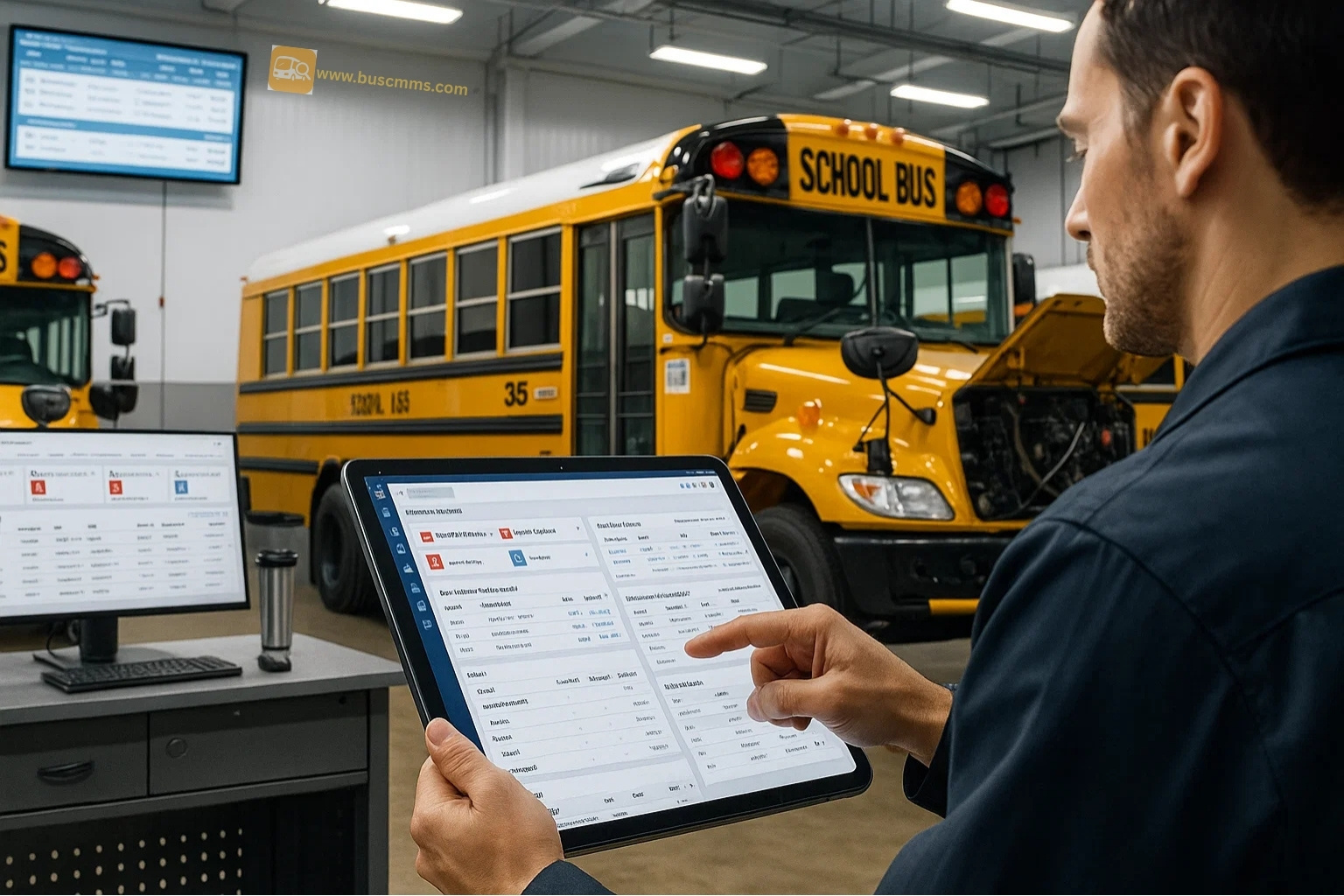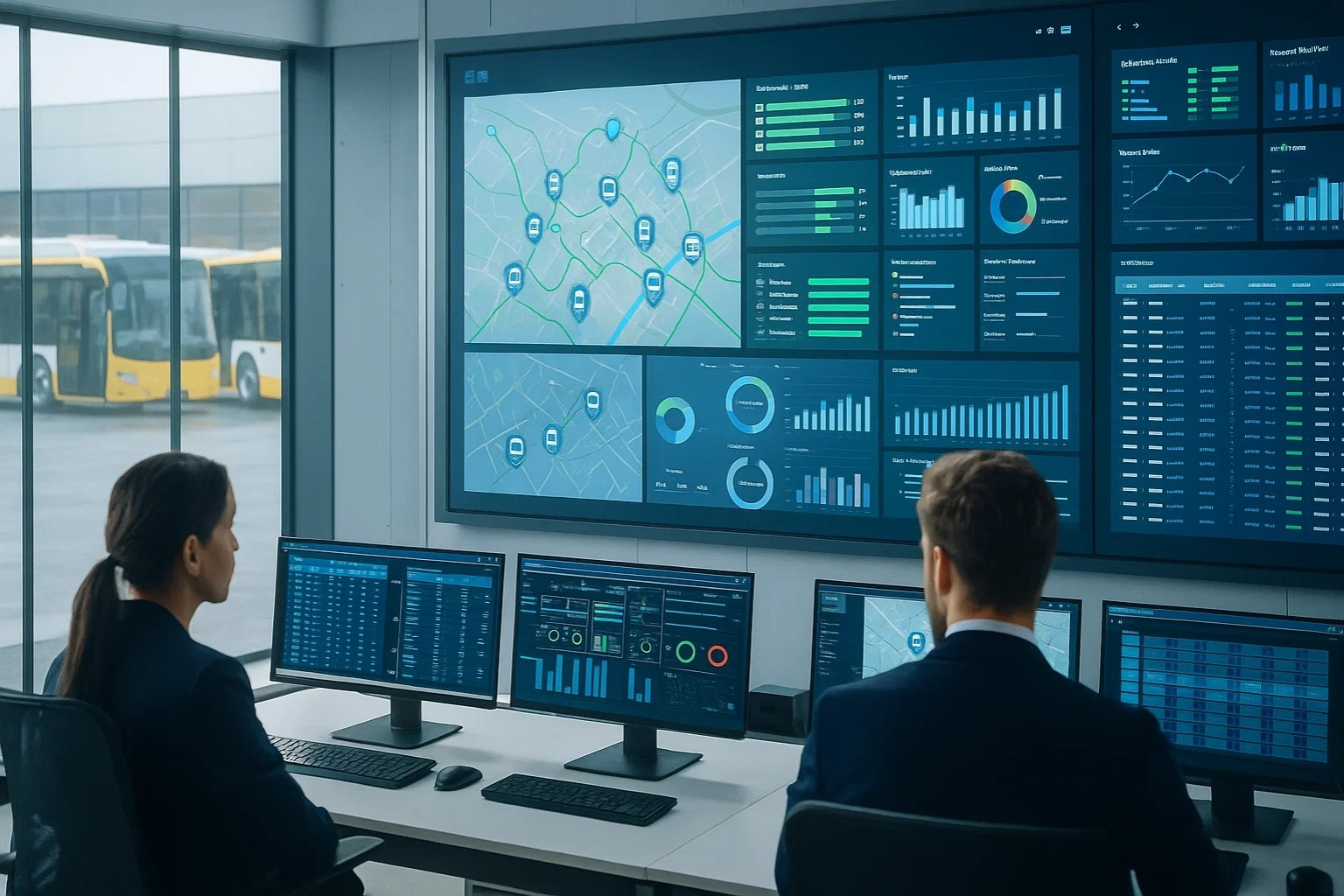Annual bus inspections represent one of the most critical compliance requirements in transit operations, yet many fleet operators struggle with the complexity and time demands of these mandatory assessments. For US manufacturing professionals managing bus fleets, understanding the intricacies of the inspection process can mean the difference between smooth operations and costly downtime, regulatory violations and safety incidents.
Modern bus fleet management has evolved beyond simple mechanical checks to encompass sophisticated CMMS systems, real-time diagnostics, and comprehensive fleet compliance tracking. Today's successful operators leverage advanced maintenance software and telematics tools to streamline their inspection processes, reduce downtime, and maintain the highest safety standards across their entire fleet.
Pre-Inspection Preparation: Setting Your Fleet Up for Success
Effective annual bus inspection begins months before the actual assessment date. Professional fleet operators understand that preparation is the foundation of a successful inspection process, involving comprehensive documentation review, preventive maintenance completion, and systematic vehicle diagnostics analysis.
Pro Tip: Implement a 90-day pre-inspection checklist using your fleet software to identify and address potential issues before they become inspection failures. This proactive approach can reduce inspection-related downtime by up to 50%.
Modern fleet tracking systems enable operators to monitor vehicle condition continuously throughout the year, identifying wear patterns, maintenance needs, and potential compliance issues before they impact inspection outcomes. Advanced telematics tools provide real-time data on engine performance, brake wear, emissions levels, and other critical systems that inspectors will evaluate.
Documentation preparation involves gathering maintenance records, driver vehicle inspection reports (DVIRs), emission certificates, and safety training records. Digital CMMS systems excel at organizing this information, providing inspectors with clear, comprehensive records that demonstrate ongoing compliance and maintenance diligence.
Critical Inspection Areas: What Inspectors Focus On
Understanding what inspectors prioritize during annual assessments helps operators focus their preparation efforts on the most critical systems and components. Federal and state regulations define specific standards that every bus must meet to remain in service.
Safety systems receive the highest scrutiny during inspections. This includes brake performance testing, steering system evaluation, emergency exit functionality, and lighting system verification. Modern vehicle diagnostics tools can pre-test many of these systems, identifying potential failures before the official inspection begins.
Emissions compliance has become increasingly complex, with inspectors focusing on exhaust systems, pollution control devices, and fuel system integrity. Fleet compliance software helps track emission certification dates, DEF system performance, and emission test results, ensuring vehicles meet current environmental standards.
Structural integrity assessment covers body condition, floor strength, seat mounting, and accessibility equipment. For operators managing aging fleets, this area often presents the greatest challenges, requiring careful maintenance software tracking to address corrosion, wear, and structural issues before they become inspection failures.
Leveraging Technology for Streamlined Inspections
Advanced transit operations increasingly rely on integrated technology solutions to manage the inspection process efficiently. Modern CMMS systems provide comprehensive inspection scheduling, automated reminder systems, and detailed tracking of inspection results and required follow-up actions.
Real-time DVIRs through mobile applications enable drivers to conduct thorough pre-trip and post-trip inspections, documenting issues immediately and triggering automatic work orders for maintenance teams. This continuous monitoring approach significantly improves vehicle condition awareness and reduces the likelihood of inspection surprises.
Ready to modernize your fleet inspection process with cutting-edge management solutions? Discover how advanced CMMS tools and predictive analytics can transform your inspection workflows.
Getting StartedBook a Demo
Telematics tools provide continuous monitoring of critical vehicle systems, enabling predictive maintenance approaches that address potential issues before they impact inspection outcomes. These systems track engine performance, transmission operation, brake wear, and fuel efficiency, providing operators with detailed insights into vehicle condition and maintenance needs.
Post-Inspection Compliance and Documentation Management
Successful completion of annual bus inspections requires systematic management of inspection results, corrective actions, and ongoing compliance documentation. Professional operators use integrated fleet software systems to track inspection dates, manage reinspection requirements, and maintain comprehensive compliance records.
When inspections identify deficiencies, effective driver management and maintenance coordination becomes critical. Advanced maintenance software enables rapid work order generation, parts procurement, and repair scheduling to minimize vehicle downtime and ensure prompt compliance resolution.
Long-term compliance success depends on continuous improvement processes that analyze inspection results, identify recurring issues, and implement preventive measures. Modern fleet tracking systems provide detailed analytics that help operators optimize maintenance schedules, improve fuel efficiency, and enhance overall fleet compliance performance.
Building a Culture of Continuous Compliance
The most successful transit operations treat annual inspections as one component of a comprehensive safety and compliance program rather than an isolated annual event. This approach involves integrating inspection requirements into daily operations, training programs, and route optimization strategies.
Effective driver management includes comprehensive training on DVIR procedures, pre-trip inspection requirements, and immediate reporting protocols for safety concerns. When drivers understand their role in the inspection process, they become valuable partners in maintaining fleet condition and compliance throughout the year.
Mastering the annual bus inspection process requires a systematic approach that combines thorough preparation, advanced technology integration, and continuous compliance monitoring. Success depends on leveraging modern fleet management tools to transform inspections from stressful compliance events into routine operational procedures.
For US manufacturing professionals managing bus fleets, embracing digital inspection solutions, predictive maintenance approaches, and comprehensive compliance tracking creates sustainable competitive advantages while ensuring the highest safety standards for passengers and drivers alike.
Frequently Asked Questions
Q: How long does an annual bus inspection typically take?
A: A comprehensive annual bus inspection usually takes 2-4 days per vehicle, depending on the inspector's findings and any required repairs. Proper preparation using CMMS systems and preventive maintenance can significantly reduce this timeframe by addressing potential issues beforehand.
Q: What happens if my bus fails the annual inspection?
A: Failed inspections require immediate corrective action before the vehicle can return to service. Modern fleet software helps track required repairs, manage reinspection scheduling, and maintain compliance documentation throughout the remediation process.
Q: Can technology help reduce inspection-related downtime?
A: Yes, integrated CMMS systems, telematics tools, and predictive maintenance software can reduce inspection downtime by 40% or more. These technologies enable proactive issue identification, streamlined documentation, and efficient repair coordination.
Q: How often should I conduct pre-inspection maintenance checks?
A: Best practices recommend implementing a 90-day pre-inspection preparation period with systematic maintenance checks and diagnostics. Daily DVIRs and continuous telematics monitoring provide ongoing condition awareness throughout the year.
Q: What documentation is required for annual bus inspections?
A: Required documentation includes maintenance records, DVIR logs, emission certificates, safety training records, and previous inspection reports. Digital fleet management systems excel at organizing and presenting this information efficiently to inspectors.



